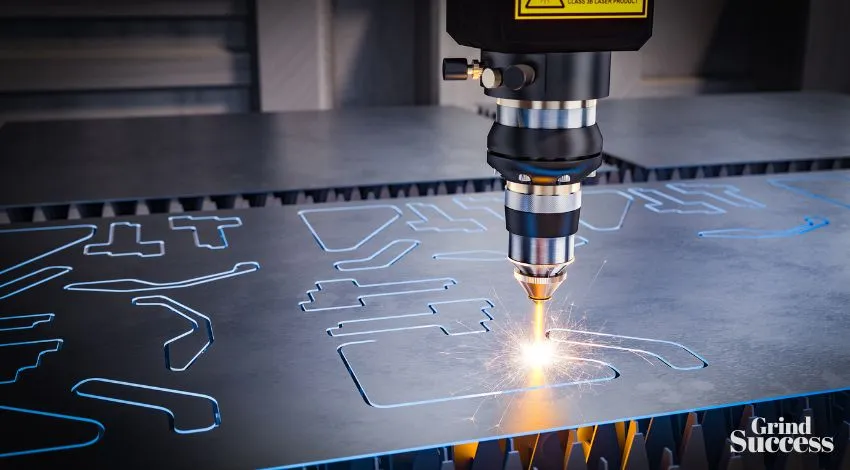How to Start a Laser Engraving Business?

Laser engraving, a cutting-edge technology that uses highly focused laser beams to create precise designs on various materials, has become increasingly popular due to its versatility, speed, and accuracy.
As demand for personalized products and services continues to grow, starting a laser engraving business offers an exciting opportunity for entrepreneurs passionate about design and technology.
By providing high-quality services and adapting to industry trends, you can cater to a diverse clientele and build a profitable, sustainable business in this flourishing market.
Step 1: Research the Market and Define Your Niche
Before diving into the laser engraving business, it’s crucial to research the market and identify your niche. Start by analyzing the local and online competition to understand the services and products they offer.
This insight will help you pinpoint potential gaps in the market and uncover areas where you can differentiate your business.
Next, identify your target audience and the types of clients you wish to serve. This could include individuals seeking custom gifts, businesses requiring promotional items, or industries that need specialized parts.
By understanding your target market, you can tailor your offerings to meet their specific needs and preferences.
Lastly, determine the materials and products you want to specialize in, such as wood, acrylic, glass, leather, or metal.
Focusing on a specific niche will allow you to hone your skills, streamline your processes, and position your business as an expert in that area.
Step 2: Create a Business Plan
Developing a comprehensive business plan is essential for the success of your laser engraving venture. This plan will serve as a roadmap, outlining your business goals, target market, and competitive advantage. Consider the following aspects when creating your business plan:
Outline your business goals, target market, and competitive advantage: Define your short-term and long-term goals for the business, as well as the target audience you plan to serve. Identify your unique selling points (USPs) that will set you apart from competitors.
Estimate startup costs, ongoing expenses, and revenue projections: Calculate the initial investment needed to acquire equipment, materials, and workspace setup.
Also, factor in ongoing expenses such as rent, utilities, insurance, and marketing costs. Estimate potential revenue based on market research and pricing strategy.
Detail your marketing strategy and growth plan: Create a comprehensive marketing plan that includes online and offline promotional efforts, such as website development, social media presence, networking, and trade shows.
Outline your strategy for attracting new customers, retaining existing clients, and expanding your business over time.
Step 3: Choose a Business Name and Legal Structure
A successful laser engraving business begins with a memorable and relevant name. Choose a name that reflects your services, is easy to remember, and stands out in the market. Once you’ve decided on a name, register it to protect your brand.
Next, determine the legal structure of your business. Options include sole proprietorship, limited liability company (LLC), or corporation. Each structure has its own set of benefits and drawbacks, so consult with a legal or financial professional to determine which option best suits your needs.
Step 4: Fulfill Legal Requirements and Obtain Necessary Permits
To ensure your laser engraving business operates legally, it’s crucial to fulfill all the necessary legal requirements and obtain required permits.
Register your business and obtain an Employer Identification Number (EIN): Register your business with the appropriate state and local agencies. An EIN is also essential for tax purposes, hiring employees, and opening a business bank account.
Check local regulations for licensing, permitting, and safety requirements: Depending on your location, there may be specific licenses or permits needed to operate a laser engraving business. Consult your local government offices to learn about any zoning, safety, or environmental regulations that may apply.
Obtain any required insurance coverage: Protect your business by obtaining the appropriate insurance, such as general liability, property, or worker’s compensation insurance, depending on your needs and local requirements.
Step 5: Acquire Equipment and Materials
Research and purchase a suitable laser engraving and cutting machine: Select a machine that meets your needs in terms of size, power, and compatibility with your chosen materials. Compare various manufacturers and models to find the best fit for your business.
Set up a computer with design software and compatible hardware: Invest in a reliable computer and design software that supports your laser engraving machine. Familiarize yourself with the software to create and manage designs efficiently.
Source materials and supplies for your chosen niche: Establish relationships with suppliers and vendors to source the materials you’ll need for your engraving projects, such as wood, acrylic, glass, leather, or metal. Look for quality materials at competitive prices to help maximize your profits.
Step 6: Set Up Your Workspace
Find a suitable location that meets safety and space requirements: Choose a workspace that accommodates your laser engraving machine, computer, and materials storage. Make sure the location meets any zoning requirements and has adequate space for your business operations.
Organize your workspace for efficient production and storage: Arrange your work area to optimize productivity, with a dedicated space for your laser engraver, computer, and design station. Ensure there’s enough room to store materials, finished products, and shipping supplies.
Ensure proper ventilation and safety precautions are in place: Laser engraving generates fumes and dust, so proper ventilation is critical for a safe work environment.
Install exhaust fans or an air filtration system and follow the manufacturer’s guidelines for machine operation and maintenance. Provide appropriate personal protective equipment (PPE) and follow safety protocols to minimize the risk of accidents.
Step 7: Develop Your Design Skills and Portfolio
Master your design software and laser machine operation: Learn the ins and outs of your design software and become proficient in operating your laser engraving machine. This expertise will allow you to create high-quality products and troubleshoot issues as they arise.
Create a portfolio showcasing a variety of materials and design styles: Build a diverse portfolio that demonstrates your skills across different materials and design styles. This will help potential clients understand the range and quality of your work.
Consider offering pro bono or discounted work to build a client base and gather testimonials: Initially, you can offer your services at a reduced rate or for free to select clients, friends, or local businesses.
This strategy will help you gain experience, build a reputation, and collect testimonials for your website or marketing materials.
Step 8: Market Your Business and Build a Customer Base
Create a professional website and establish a social media presence: Design a website showcasing your portfolio, services, and contact information.
Use social media platforms to engage with potential clients and share your work, promotions, and industry news.
Network with local businesses and attend trade shows or events: Forge connections with local businesses that may require your services or benefit from a partnership.
Attend industry events, trade shows, and local networking functions to expand your reach and stay informed about industry trends.
Utilize online advertising, email marketing, and search engine optimization (SEO) to reach potential customers: Invest in online marketing strategies, such as Google Ads, email campaigns, and SEO, to increase your online visibility and attract new clients. This targeted approach will help you reach your ideal audience and grow your customer base.
Conclusion
In conclusion, starting a laser engraving business is an exciting and potentially profitable endeavor for those passionate about design and technology.
By carefully researching the market, defining your niche, developing a solid business plan, and investing in the right equipment and skills, you can create a thriving business in this growing industry.
Remember, success in the laser engraving market requires dedication, adaptability, and a commitment to providing exceptional services that cater to the diverse needs of your clientele.
As you follow these steps and embrace the challenges that come your way, you’ll be well on your path to establishing a sustainable and rewarding laser engraving business.






